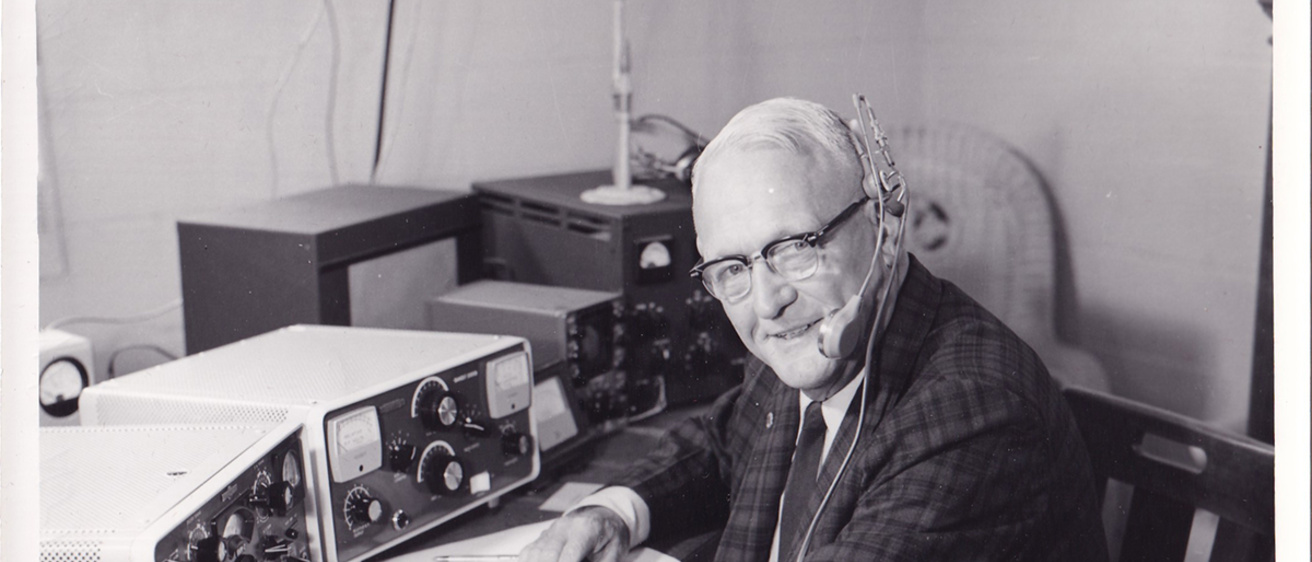In the early days of eye banking, there were significant challenges in ensuring a consistent and reliable supply of corneal tissue for transplant surgeries. By 1962, although several eye banks had been established and the Eye Bank Association of America had just been founded, it was particularly difficult to find tissue for emergency surgeries.
During an interview with James Beilman in 1977, Dr. Alson E. Braley, founder of Iowa Lions Eye Bank, said that in those days, in many instances, perforated corneas could only be repaired with a transplant.
“I’d had this man come in. He’d had a perforation of the cornea. I called every place trying to find an eye. They didn’t have one, so the poor man lost his eye,”
Braley approached Ted Hunter, a member of the Iowa City Lions Club and fervent eye bank supporter. Both Braley and Hunter were amateur ham radio operators, and the two decided that radio could be utilized to bridge the gap between eye banks, hospitals, and surgeons across wide distances.
On December 20, 1962, Braley and Hunter established the Eye Bank Network to coordinate the exchange of donor eye tissue between 10 eye banks in the Midwest. At first, ham radio operators in Illinois, Indiana, Iowa, Missouri, Oklahoma, and Nebraska would tune in to the frequency 3970 at 7 a.m. six days a week, to see where tissue was available and which locations had an immediate need. They then would figure out how to transport that tissue by road or air.
The first cornea the Eye Bank Network placed was on Christmas Eve 1964 for a two-year-old girl in Oklahoma City who had fallen and injured her eye. Ham Radio Operator Travis Harris of Oklahoma City, who himself was blind, helped arrange for the transfer of the cornea from a Chicago-area hospital, and the operation was a success. Twenty-six years later, Braley was able to meet that girl in person.
In its first year of operation, the Eye Bank Network helped place 75 corneas for emergency transplants. Within eight years, 4,000 corneas had been distributed because of the Eye Bank Network.
The Eye Bank Network went off the air in 1992, after modern computing methods made the network obsolete. By this time, 11,000 corneas had been distributed due to the network.

